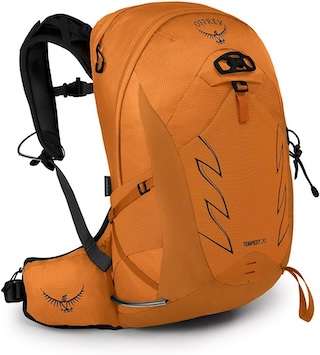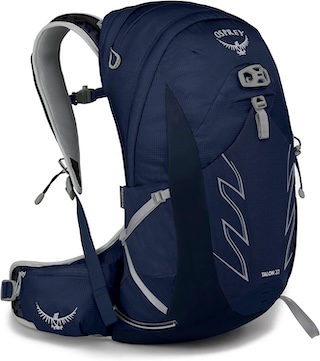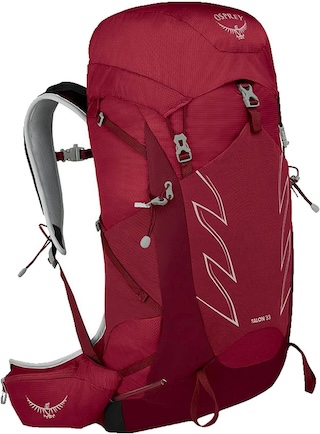Explore the Barden Moor Walk with Stunning Reservoirs and Open Moorland
This Barden Moor walk begins at the car parking area beside the road that links the village of Embsay to the B6160, close to Barden Tower. The car park, located next to a cattle grid near the track leading down to Lower Barden Reservoir, is spacious, so parking should not be an issue. From here, start your walk by heading down the track towards Lower Barden Reservoir. Shortly before reaching the reservoir dam, veer left onto another track that leads north. This path runs along the western side of the reservoir, guiding you to its north-western tip.
Continue along the track in a north-west direction across Barden Moor for about 1½ miles. This section of the Barden Moor walk is straightforward, with wide, well-maintained stone tracks that are easy to follow. Eventually, you will arrive at the northern end of the dam at Upper Barden Reservoir. Take a moment to explore the area, perhaps having a look at the weir and the reservoir keeper’s house. This spot is ideal for a coffee break or a quick snack before you resume your hike.

After your break, head east from the reservoir keeper’s house and ascend uphill on another stone track. This path soon curves north. Continue on this route for about 1¼ miles until you reach a small body of water on your left. Shortly after, turn left and follow the clearly defined path heading west. Along this stretch, you will pass an old stone chimney on your left. For those interested in a short detour, you can turn right just after the chimney to enjoy the views from the rocks at Numberstones End. After taking in the scenery, return to the main trail and continue westward.
The next stage of the Barden Moor walk leads you for just over a mile to reach Rolling Gate Nook. Here, you have another optional detour: leave the track momentarily to walk across the moorland and enjoy the sights of Rolling Gate Crags. After this brief diversion, return to the main path and continue following the route as it heads south-west alongside a wall. Be aware that this section can get boggy, particularly in winter. This path will lead you to the Cracoe War Memorial, a prominent landmark that is well worth a visit.

From the Cracoe War Memorial, continue following the wall in a south-west direction for slightly more than a mile until you reach Rylstone Cross. As with the previous section, the path here can become boggy, but the stunning rock formations along the way make the effort worthwhile. Once you reach Rylstone Cross, your route will turn south, then south-east, before curving eastwards back onto the open moorland.
For the final stretch of this Barden Moor walk, follow the path east for about ¾ mile until you join a wider stone track. Take care not to turn right towards Embsay Reservoir. Instead, continue east on the well-maintained track for nearly three miles. While this final stretch may feel long, the exhilaration of the open moorland will make it enjoyable. This track will eventually lead you back to the car park, completing your 12-mile journey. Along the way, you’ll encounter diverse landscapes, historical landmarks like the Cracoe War Memorial and Rylstone Cross, and fascinating rock formations, making this Barden Moor walk a truly rewarding experience.
Barden Moor Walk: Maps and Tools
Visit either the OS Maps website or the Outdooractive website to view this walking route in greater detail. Both platforms offer a range of features, including the ability to print the route, download it to your device, and export the route as a GPX file. You can also watch a 3D fly-over and share the route on social media.
Barden Moor Walk: Distance, Duration, Statistics
Distance: 11¾ miles
Distance: 18¾ kilometres
Duration: 5½ hours
Ascent: 1267 feet
Ascent: 386 metres
Type: Circular walk

Recommended Ordnance Survey Map
The best map to use on this walk is the Ordnance Survey map of the Yorkshire Dales Southern & Western Area, reference OS Explorer OL2, scale 1:25,000. It clearly displays footpaths, rights of way, open access land and vegetation on the ground, making it ideal for walking, running and hiking. The map can be purchased from Amazon in either a standard, paper version or a weatherproof, laminated version, as shown below.
Standard Version
About Barden Moor
Barden Moor, situated between Skipton to the south and Grassington to the north, is depicted on the Ordnance Survey map of the Yorkshire Dales Southern & Western Area, reference OS Explorer OL2. This expansive moorland is best known for its two reservoirs, Upper Barden Reservoir and Lower Barden Reservoir, both of which were constructed in the late 19th century to supply water to Bradford.
Upper Barden Reservoir, built between 1876 and 1882, is fed by streams that originate from the moor, with its main outflow, Barden Beck, flowing into Lower Barden Reservoir and eventually into the River Wharfe. Lower Barden Reservoir, completed earlier in 1860, plays a similar role in the region’s water supply system.
In addition to its reservoirs, Barden Moor is characterised by its Millstone Grit geology, which creates a distinct and rugged landscape. For those interested in hiking, a Barden Moor walk offers a captivating exploration of this terrain. Along the walk, you’ll encounter impressive spots like Numberstones End and Rolling Gate Crags, where large, weathered rock formations dominate the scenery. These dramatic features, coupled with sweeping views of the surrounding moorland, make Barden Moor an ideal destination for those seeking both adventure and natural beauty.
Barden Moor’s Historical Landmarks
The moor is also home to two significant historical landmarks: the Cracoe War Memorial and Rylstone Cross. The Cracoe War Memorial, a gritstone obelisk erected in 1922, commemorates the local men who lost their lives during World War I. Perched on Cracoe Fell at an elevation of 500 metres (1640 feet), the memorial offers commanding views of the landscape below. After World War II, additional names were added to the memorial, further solidifying its significance within the community.
To the south of the Cracoe War Memorial lies the Rylstone Cross, a large stone monument erected in 1995 to replace a wooden version that had stood for two centuries. The original pillar was erected to commemorate the 1814 Peace of Paris, with cross-like wooden arms added in 1887 to mark Queen Victoria’s Golden Jubilee. In 1995, the current solid stone version was installed, replacing the damaged wooden structure. This historical landmark, set against the moorland’s dramatic backdrop, adds another layer of interest to a Barden Moor walk.
Barden Moor Walk: My Photos
At the start of my Barden Moor walk, I look down from the car park towards Lower Barden Reservoir. I can just make out the track I need to follow on the left-hand side of a large clump of trees. This track leads along the western edge of the reservoir, on the very left-hand side of the photograph.

I cross over this bridge, which spans the stream called Near Long Gill. In the background, Lower Barden Reservoir is in view, adding to the picturesque scene as I continue my walk.

This is Lower Barden Reservoir, as seen from the footbridge near the reservoir’s north-west tip. The view from this vantage point beautifully showcases the reservoir’s calm waters and dam construction.

Near Brass Castle, which lies between Lower Barden Reservoir and Upper Barden Reservoir, I encounter some very ornate grouse shooting shelters. The lovely colours of the trees and the surrounding vegetation really strike me, making this a visually appealing part of the walk.


From the grouse shooting shelters near Brass Castle, I take in a stunning view of Lower Barden Reservoir. The perspective from this spot allows me to fully appreciate the reservoir’s scale.

This is the reservoir keeper’s house at Upper Barden Reservoir, built in 1883. The house, situated at the northern end of the reservoir, has a sturdy and imposing appearance. At this point, I am almost a quarter of the way around my Barden Moor walk.

Here, I capture Upper Barden Reservoir. It’s just great being out here in this remote and open countryside. The expansive, untouched landscape makes this part of the walk feel especially rewarding.

At the northern end of the Upper Barden Reservoir dam, I explore some very interesting weirs. These structures add another layer of intrigue to the reservoir’s already captivating surroundings.


I take a detour to the scenic landscape at Numberstones End, where large grey boulders dominate the view. The mix of rocky outcrops and heathland, with rolling hills stretching into the distance, creates great views that make this detour worthwhile.


As I continue across Burnsall and Thorpe Fell, I pass this stone-built chimney. Its presence makes me wonder about its history and the stories it might hold from the past.

A solitary stone grouse shooting hut stands by the side of the track across Burnsall and Thorpe Fell. Situated in this remote moorland setting, the building is constructed from rough-hewn stone, with a pitched roof made of slate. It feels perfectly at home in this rugged landscape.

Rolling Gate Crags, a rugged outcrop of large, weathered rocks, sits on the hillside. These grey, rough-textured boulders have deep cracks and crevices, adding character to the landscape. In the background, the landscape opens up to reveal the wide, green valley through which the B6265 Grassington to Skipton road runs. The village of Cracoe and Swinden Quarry are also visible in the distance.


This is the dry stone wall between Rolling Gate Crags and the obelisk. Although no path is marked on the maps, the route alongside the wall is well used. However, I’ve known this stretch of the walk to get wet and boggy in winter, so it’s worth being prepared.

As I follow the wall south from Rolling Gate Crags, the Cracoe War Memorial obelisk comes into view. I’m really enjoying this section of the walk and look forward to reaching the memorial. At this point, I’m about halfway through my Barden Moor walk.

The Cracoe War Memorial is perched on the summit of Cracoe Fell, at a height of 500 metres (1640 feet). From this vantage point, it overlooks the villages of Cracoe and Rylstone beneath the fell’s western slopes. The obelisk, built in 1922, took about six weeks to complete and cost approximately £56. Made from local sandstone with a concrete cap, it stands 7.2 metres high and 2.7 metres wide at its base. The obelisk has three sections. The lower section is hollow and contains a copy of the Craven Herald and some coins in a sealed bottle. The middle section is also hollow, while the upper section is solid.
Originally, the initials of the men who lost their lives were chiselled into the stone (still visible today), along with their dates of enlistment and death. Later, an alabaster tablet was added, and more recently, this was replaced by a bronze plaque. The memorial commemorates 13 men who served in the First World War (1914-1918) and three who served in the Second World War (1939-1945).

The bronze plaque attached to the obelisk reads as follows:
ROLL OF HONOUR OF THE MEN
OF THIS PARISH WHO GAVE THEIR LIVES
IN TWO WORLD WARS
1914 TO 1919
JOHN DENT PTE. BORDER REG.
FRANK HIGHAM CPL. WEST RIDING REG.
CHARLES HYMAS PTE. LABOUR CORPS.
HORACE MARSHALL PTE. WEST RIDING REG.
GERALD W. E. MAUDE CAPT. YORKS REG.
MICHAEL D. W. MAUDE CAPT. YORKS REG.
FRED NELSON PTE. SOUTH STAFFS. REG.
J. NORMAN PROCTER LT. WEST RIDING REG.
THOMAS B. RENTON PTE. MACHINE GUN CORPS.
RHODES SPENCE PTE. WEST RIDING REG.
JAMES H. SWALES SEAMAN R.N.
TOM SWALES PTE. WEST RIDING REG.
JOHN W. WHITFIELD PTE. WEST RIDING REG.
1939 TO 1945
SIDNEY DAGGETT P.O. R.A.F.
RICHARD M. PROCTER L/BDR. R. A.
CURTIS WALKER DRIVER R.A.S.C.


I’m in awe of the weathered gritstone formations that are a prominent feature in this area. These large rocks are heavily weathered, with deep grooves and cracks that give them a distinctive appearance. The stones almost seem as if they have been carefully arranged, though they were clearly shaped by natural forces. The muted grey tones of the rocks contrast with the green and brown hues of the surrounding grass and moorland vegetation.



Following the dry stone wall, I continue towards the cross on Rylstone Fell. I enjoy the heather and rough moorland terrain, dotted with areas of boulders. In the distance, I can just make out the cross perched on a rocky outcrop, overlooking the valley below.

I reach the fascinating Rylstone Cross at the southern end of the impressive gritstone ridge. This is a magnificent place, and I spend some time here enjoying the landscape and taking in the views. It’s a spot that feels both serene and awe-inspiring, a spot ideal for taking a break and enjoying a coffee from the old flask.


At this point, I’m about three-quarters of the way around my Barden Moor walk and begin the long 3-mile (4.8-kilometre) route back via Bilton Ings and Lumb Gill Head. Although this stretch of the walk seems to go on a bit, the track is excellent underfoot, making it a pleasant journey despite the distance.

As I approach the end of my Barden Moor walk, I get a clear view of Lower Barden Reservoir from Hutchen Gill Head. In the distance, on the horizon, I can also see Simon’s Seat, a place I’ve visited on several occasions. Reflecting on this walk, I realise it has been a fantastic experience.

Highly Rated Osprey Hiking Backpacks for Outdoor Enthusiasts
Osprey’s reputation for crafting high-quality hiking backpacks is well-established, offering a range of options that cater to both men and women. The following four backpacks stand out for their excellent sales and customer ratings on Amazon, making them a top choice for outdoor enthusiasts seeking reliability and comfort. As an Amazon affiliate, I may earn a small commission from any purchases made through the links provided. This helps support the upkeep of this website. Rest assured, you won’t pay a penny extra, but your purchase will contribute to keeping my site running smoothly. Happy walking!

Osprey Tempest 20 Women’s Hiking Backpack
The Tempest 20 stands out as the ideal solution for day-hiking, biking, or peak-bagging, tailored specifically for women. It features a panel-loading design for ease of access, complemented by an internal zippered mesh pocket with a key clip for secure storage. Unique to this model are the Stow-on-the-Go trekking pole and LidLock bike helmet attachments, enhancing its versatility. Side stretch mesh pockets, along with an easy-access, expandable stretch mesh harness pocket, offer ample storage. Additionally, it includes a blinker light attachment (light not included) and a large stretch mesh front panel pocket for extra carrying capacity.

Osprey Talon 22 Men’s Hiking Backpack
Designed for the active adventurer, the Talon 22 provides an optimal panel-loading design suitable for day-hiking, biking, or peak-bagging. Key features include dual-zippered panel access to the main compartment and a tuck-away ice ax attachment with a bungee tie-off. It boasts a top panel zippered slash pocket for quick access items and lower side compression straps for load management. An external hydration reservoir sleeve and dual-zippered fabric hipbelt pockets enhance hydration and storage, while a large stretch mesh front panel pocket increases its utility for various activities.

Osprey Tempest 30 Women’s Hiking Backpack
The Tempest 30, designed with a women’s-specific fit, is a streamlined top-loader ideal for both extensive day trips and light-and-fast overnight adventures. It includes a fixed top lid with an external zippered slash pocket and an under-lid zippered mesh pocket with a key clip for organised storage. The pack features a tuck-away ice ax attachment with a bungee tie-off, dual upper and lower side compression straps for load adjustment, and an external hydration reservoir sleeve. For added convenience, it offers an easy-access, expandable stretch mesh harness pocket and dual-zippered fabric hip-belt pockets.

Osprey Talon 33 Men’s Hiking Backpack
The Talon 33 is engineered for dynamic movement, making it the perfect streamlined top-loader for committed day trips or light-and-fast overnight excursions. It features top load access to the main compartment for easy packing and retrieval. The backpack is equipped with a large stretch mesh front panel pocket, Stow-on-the-Go trekking pole attachment, and stretch mesh side pockets for versatile storage options. Additionally, an easy-access, expandable stretch mesh harness pocket and dual-zippered fabric hip-belt pockets offer convenient storage solutions for essential gear.